
“Ever had the feeling you’ve been cheated?”. It’s a question which could be asked about some of the world’s most iconic tourist destinations.
There are the landmarks which appear larger than life in the glossy literature but are so insignificant that they provoke a ‘so what’ reaction when you see them ‘in the flesh’
You could also make a separate list of disappointing attractions that have been ruined by mass tourism, rendering them experiences from hell. There are countless examples of places which you could label ‘tacky’ or ‘trashy’ and spoiled by huge crowds.
Here’s my top 10 most disappointing tourist sites. I’d love to know if you agree with my choices.
Plymouth Rock – New England

“Can that really be it?” was my incredulous reaction as I stood in front of Plymouth Rock in Massachusetts. I was expecting a large promontory but couldn’t believe it when I discovered this iconic American landmark resembled a small stone.
Surely this couldn’t be ‘the rock’ where the Pilgrims landed when they arrived from the Old World back in 1620?
The burning question is ‘why is it so small’?
The real Plymouth Rock was a granite boulder 15 feet long and 3 feet wide but when the good people of Plymouth tried to preserve the symbolic rock in 1774, it split in two. Disaster!
The top of the rock was sent for display in the Town Square whilst the bottom part was left behind at the waterfront where it suffered further damage from souvenir hunters.
The other chunk of Plymouth Rock was moved to safety inside the Pilgrim Hall Museum in 1834 but got cracked during a bumpy journey.
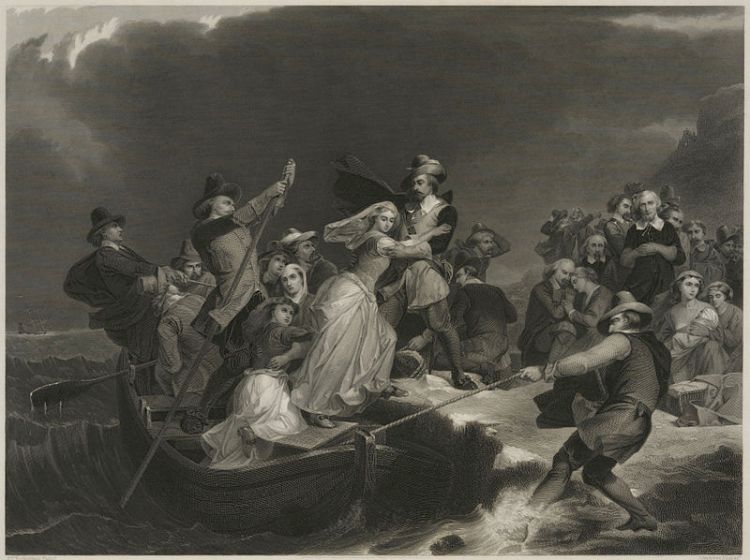
When the two chunks of the Rock were reunited in 1880, the whole boulder looked much smaller than the original – and suffered further cracking. The 102 Mayflower passengers who founded New England survived a difficult voyage, but the Rock they landed on suffered greater woes.
Despite this torrid tale, the boulder has become a symbol of the courage of the men and women who founded the first New England colony. Unfortunately, there is no historical evidence to confirm Plymouth Rock was the Pilgrims’ actual stepping stone to the New World!
The Little Mermaid – Copenhagen – Miniature Mermaid

Denmark’s famous Little Mermaid statue is perhaps the country’s most iconic landmark, sitting on a rock by the city’s waterfront.
Rather like Plymouth Rock, she’s had a difficult existence since she made her first appearance in 1913. Designed by Danish sculptor Edvard Eriksen, she was to be modelled on the ballerina Ellen Price, but when she refused to pose nude, Eriksen’s wife, Eline, took over the gig.
Over the last century, she has been decapitated three times (in 1964, 1990 and 1998), lost her arm in 1984 and was knocked off her pedestal in 2004. But, like the Bionic Woman, they’ve rebuilt her every time.

The Little Mermaid receives more than a million visitors a year, but you have to wonder what they make of this small and unobtrusive sculpture. You can almost miss her completely, if you’re not sharp-witted.
Then, there are the industrial views and power station in the distance which seem to be air-brushed out of most tourist brochures.
Still, she’s a survivor and, despite her small frame, you have to say you’ve seen this famous figure before you can judge her.
Piccadilly Circus – Tacky Tourism
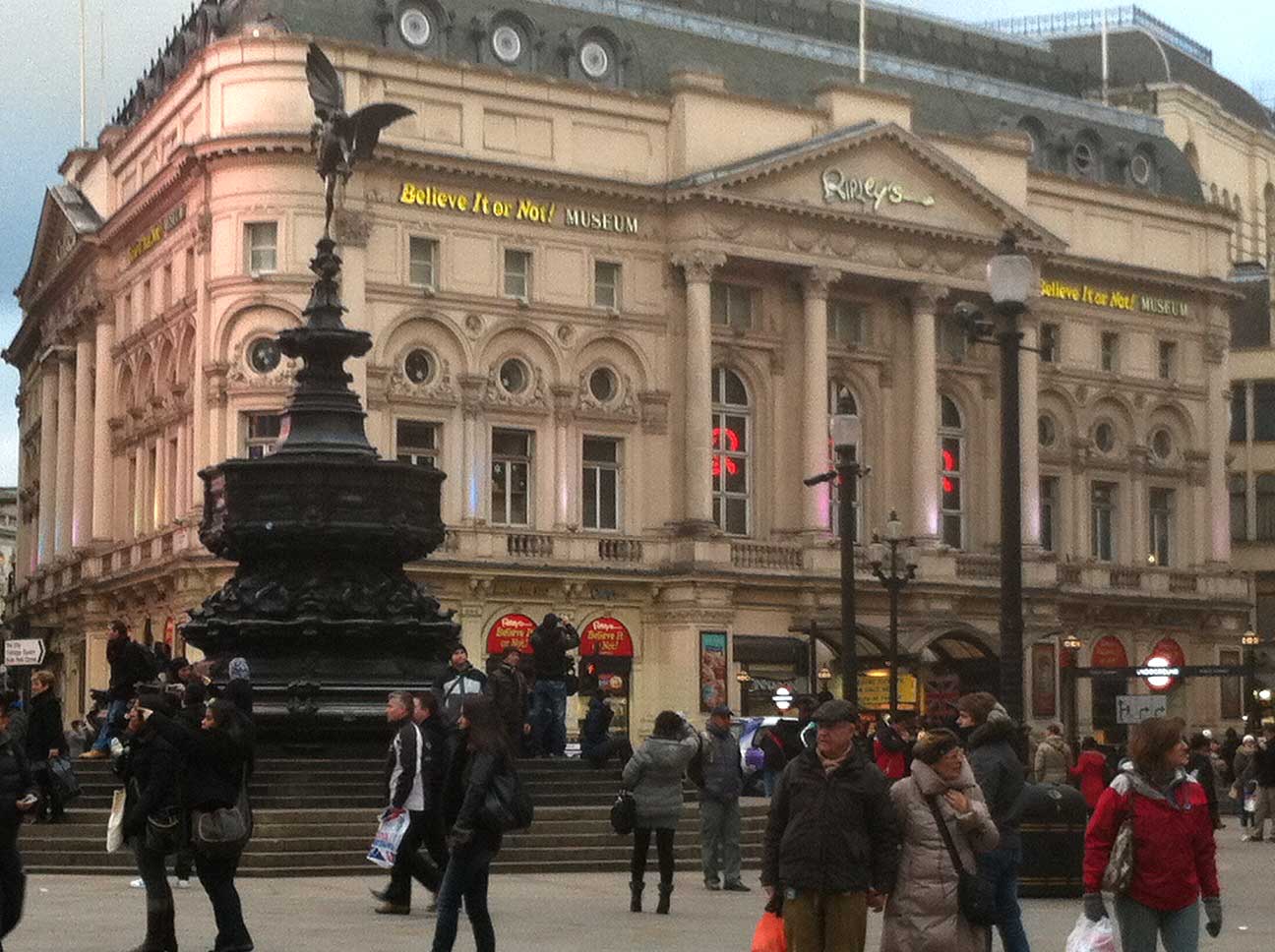
Once upon a time Piccadilly Circus felt like the epicentre of one of the world’s great capital cities, but today, it’s just like anywhere else – a smaller version of New York’s Times Square.
It’s also a massive disappointment if you’ve ever been to the world’s most spectacular illuminated city, Las Vegas which boasts stunning fountains, neon lights and casinos.
Let’s face it, Piccadilly Circus is a dull and distinctly uncool meeting place. It’s a tourist trap featuring the worse excesses of mass travel, surrounded by tacky shops selling tasteless trinkets and Union Jack T-shirts.
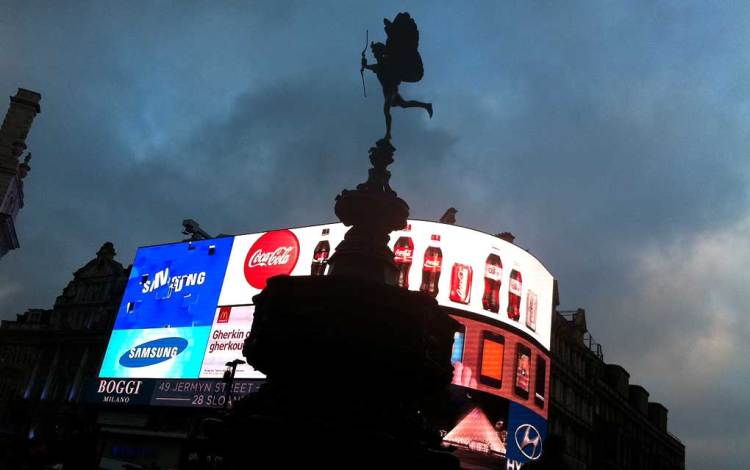
The crowds still flock here, but this is basically a traffic junction. It looks surprisingly small and underwhelming with busy traffic zooming through.
Even the statue of Anteros is pretty puny – Alfred Gilbert’s winged nude statue of the Greek god is a London icon – even though it was mistaken for his twin brother, Eros, for many years. For me, this is one of London’s most disappointing experiences.
Times Square – New York – Overcrowded junction

New York’s Times Square is another city space I dislike for its crowds, falseness and gaudiness. It’s noisy, brash and in-your-face which isn’t what I look for in my favourite city spaces.
Fighting your way through the thronged crowds is such a pain that you can’t revel in its bright lights and oversized, illuminated billboards. It’s also so full of itself that it has its own Twitter account.
This is one of the world’s busiest pedestrian intersections and the hub of the Broadway theatre district. I was surprised to learn that Times Square is one of North America’s most visited tourist attractions, with around 50 million visitors every year.
OK, it may be a fun place to hang out on New Year’s Eve when it hosts a huge party, but I’d rather visit the Lincoln Center’s fountain-lined square or Central Park, both of which are cooler city spaces with greater personality and charm.

Mannequin Pis – Brussels – Taking the P***
What can you say about the Mannequin Pis? If you’re looking for tasteless vulgarity, you’ve come to the right place – Brussels.
This tiny urinating boy sits on a tiny plinth off a bustling side street in Brussels surrounded by huge crowds jostling for the best view. He’s so small – at 24 inches high – that you can hardly see him unless you’re close up.

“That’s piss poor”, quipped a less than impressed British tourist in front of me, and I couldn’t agree more. He resembles one of those gross cherubs which decorate vulgar Baroque buildings.
The bronze statue was designed by Jerome Duquesnoy and put in place around 1618 – he’s supposed to be the emblem of the rebellious spirit of the city of Brussels.
Even more bizarre is that he boasts a wardrobe of more than 900 suits, some of which he wears each week. I felt cheated that he was naked on my trip because a costume might at least have hidden this ugly figure. But perhaps you disagree and love this plucky Belgian lad with his bizarre spouting action?

Worse of all, there are the tatty gift shops in the surrounding streets selling replica Mannequin Pis statuettes, corkscrews, garden fountains and pencil sharpeners.
But the prize for the tackiest souvenir goes to the brightly coloured life size versions of the Mannequin Pis in yellow, orange or metallic silver. You can also buy costumed versions of the boy which are marginally more tasteful.
Classic Eurotrash or kitsch? Only you can decide but I know where I stand!
The Tower of Pisa – Italy – Towering Crowds
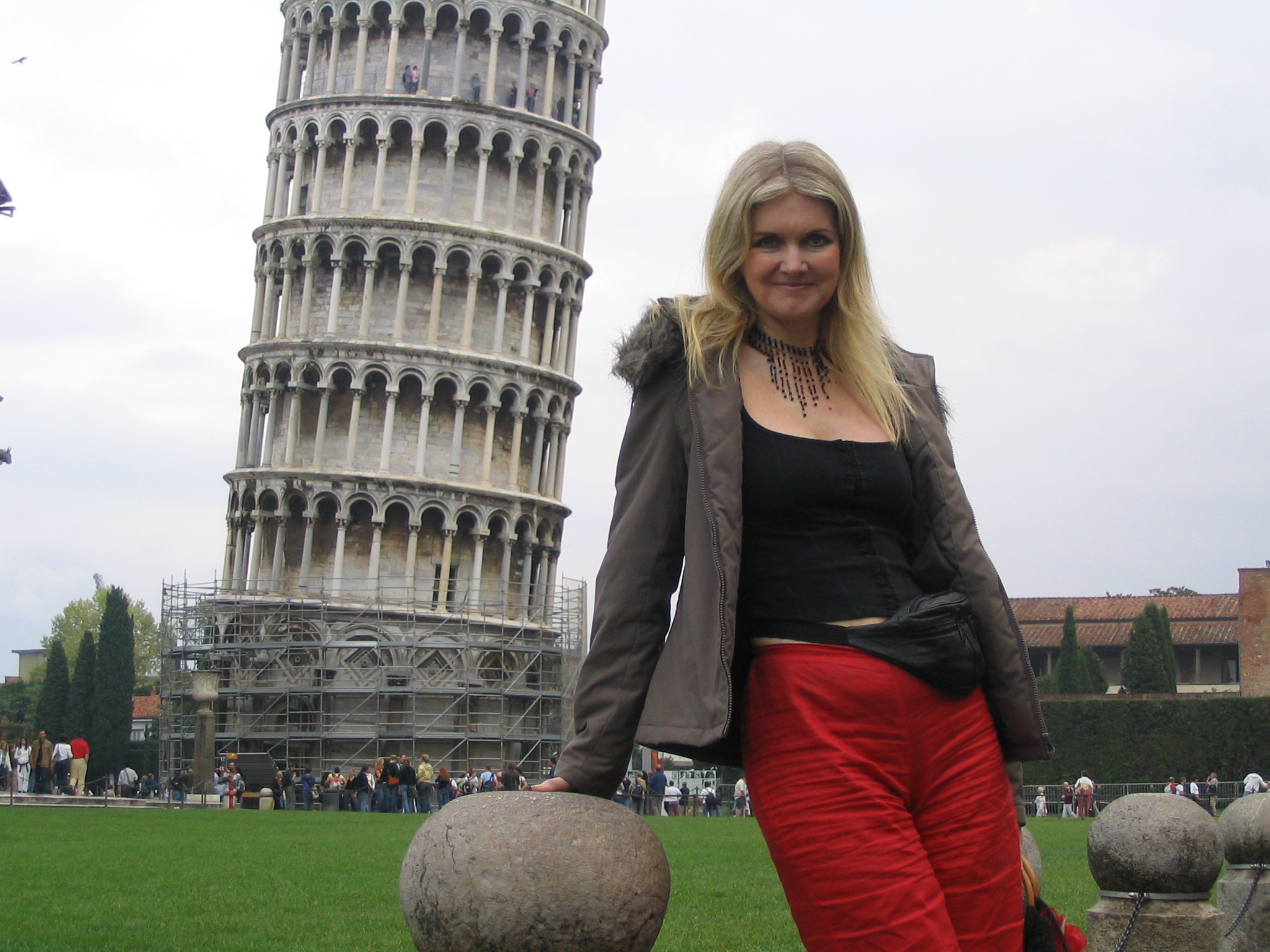
The trouble with the Tower of Pisa isn’t the leaning structure itself, it’s the crowds of tourists and the problem of booking a trip to this iconic Renaissance building.
The Tower of Pisa is one of the four buildings that make up the cathedral complex – the Piazza dei Miracoli – in this historic city. Built in 1173 and completed 200 years later (don’t ask!), its 207 columns are arranged around eight stories like an overdecorated tiered wedding cake.
Pisa got its name from a Greek word meaning “marshy land” – didn’t they think this might be a problem? The tower looks bizarre with its 10 degree angle of tilting. It’s a historic oddity.

Turn up without booking in advance and you’ll be forced to spend your whole visit wishing that you’d booked tickets on the internet three months earlier.
Once you’ve walked around the leaning tower twice and taken endless amusing, skew-whiff photos and selfies, there’s not much to see. Worse still, it was partly shrouded in scaffolding during my trip.
The architecture may be great but the crowds are horrendous. Visitor numbers have been controlled in recent years to protect the building. But the lack of other major attractions in the city means that you’ll end up in the nearest tacky cafe for hours to kill time. And then there’s the crazy traffic system in Pisa, but that’s another story.
Look out for the traffic signs to ‘Torre Pendente di Pisa’ or you’ll be driving around in circles like we were!
Rhine Valley – Germany – The Road to Hell
Is it unfair to label a whole area ‘disappointing’ when there are some good bits? The Rhine Valley is picturesque in places but there are relatively few quiet spots unless you head inland.
The Rhine Valley is going on the list because it’s too busy, heavily trafficked and semi-industrial along parts of its tourist route.

Forget images of cuckoo clocks, charming beer-drinking riverside bars and picturesque countryside views. Much of the main route along the valley is jam-packed with lorries, trucks and cars, belching out fumes.
And then there are the caravans… I have a camper van but when you get a huge log jam of too many vans and caravans on one route, it destroys the feeling of peace and solitude. The Rhine Valley is lined with caravan sites everywhere along its most popular sections. It’s Germany’s ‘Benidorm on the Riverfront’.
Am I being harsh? Perhaps I was extra grumpy because I came down with glandular fever on my trip to the Rhine? But you can’t deny that it has been ruined by mass tourism. It’s also a working region with industrial shipping and huge freight lorries, hardly a place to stop for quiet reflection.
Perhaps the Rhine Valley is best experienced from the water on a boat trip? I’m not going to be rushing back to find out any time soon.
Charles Bridge – Prague’s Bulging Bridge

Charles Bridge is a historic Gothic bridge which crosses the Vltava River in Prague and connects the city’s Old Town and Lesser Town. Decorated along its route by a gallery of 30 statues of saints, this is one of Europe’s finest bridges. It features on every picturesque postcard of Prague, but the reality is rather different.
It’s a terrible tourist trap, overcrowded with coach loads of visitors, tour parties and stag parties in high season. It’s hard to move along the bridge at busy times when you’re in danger of getting poked in the eye by someone with a selfie stick or a guide holding a tour group umbrella.
It’s also especially popular with petty thieves so hold onto your money bags and purses.

The lovely statues on the bridge are actually replicas – the originals have been moved to the National Museum, which is disappointing if you’re looking for an authentic experience.
The street approaching the bridge is my idea of mass tourism hell with terrible trinket shops and trashy, cheap Bohemian glass stores. I’m sure that posh Bohemian glass is lovely but the versions we saw looked like something from the bargain buckets in Poundland.
Prague may be a beautiful historic city but this is one landmark attraction that fails to impress, largely due to mass tourism.
Trevi Fountain – Rome – Tacky Tourism

The Trevi Fountain is supposed to be of Rome’s most beautiful tourist spots, full of romance and nostalgia. Remember, the classic film La Dolce Vita’s famous fountain scene with Anita Ekberg who danced in its waters?
Well, it isn’t quite like that today. It’s overrun with tourists fighting to get the best selfies or trying to splash their ankles in its small ‘paddling pool’
Trinket sellers and tacky stores line the fountain edges, that’s if you can get near them for the huge crowds. What should be a delightful Italian experience turns out to be tourist hell.

Le Pont d’Avignon – Provence – Mind The Gap
Avignon is a charming Southern French city brimming with history and packed with gorgeous old buildings. In the early 1300s, Avignon was the centre of the Roman Catholic world and a trip to the impressive Popes’ Palace is one of the highlights of any trip to this Provencal city.
But I’m sorry to say that its bridge is a complete letdown. The famous nursery tale bridge (of “Sur Le Pont D’Avignon” fame) is actually only half a bridge which finishes in the middle of the river.
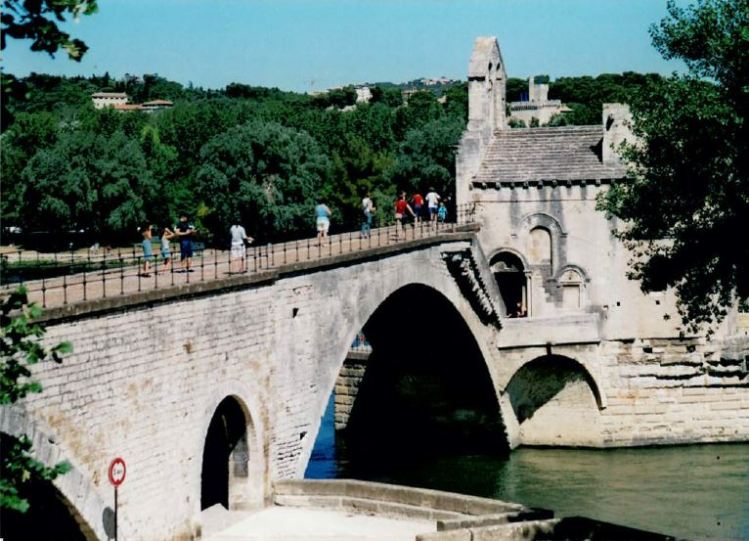
The bridge was built in the 12th Century by a young shepherd from Ardèche called Bénezet who heard voices telling him to build a bridge in Avignon. This is weird enough in its own right but what happened next is even odder.
The bridge originally had 22 arches but was dismantled in 1226, and later rebuilt. Then it was washed away several times by flood waters and rebuilt again until eventually it was abandoned in the 17th Century.
Today, all that remains of the bridge over the River Rhone are four arches and a chapel dedicated to Saint Nicolas. A bit of an anti-climax, if there ever was one!


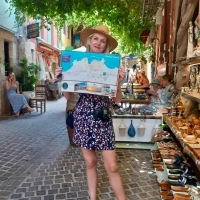
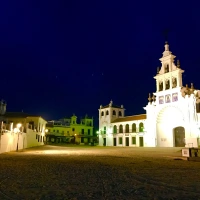

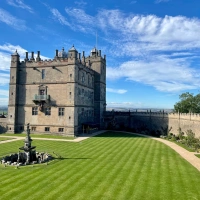



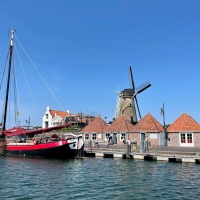



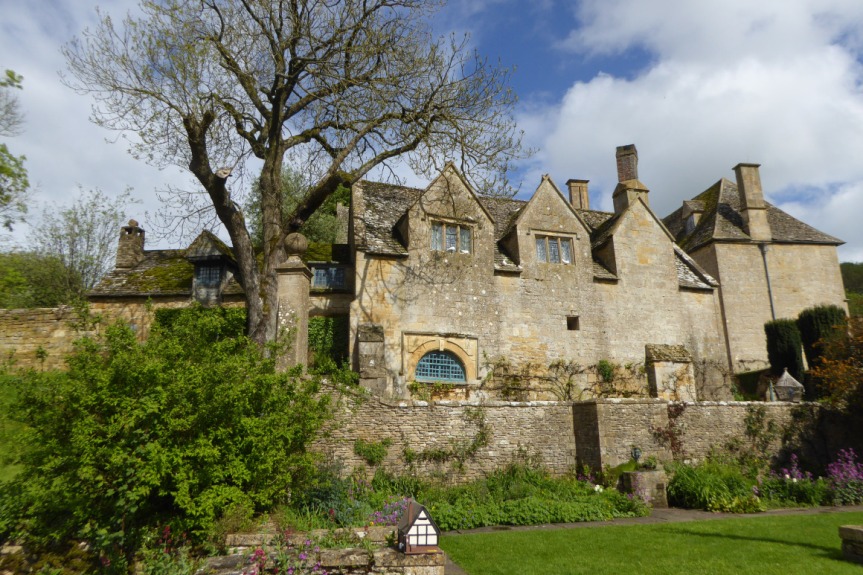



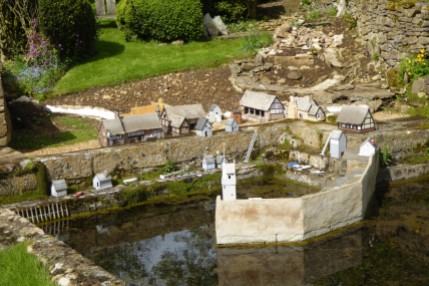



1 reply »